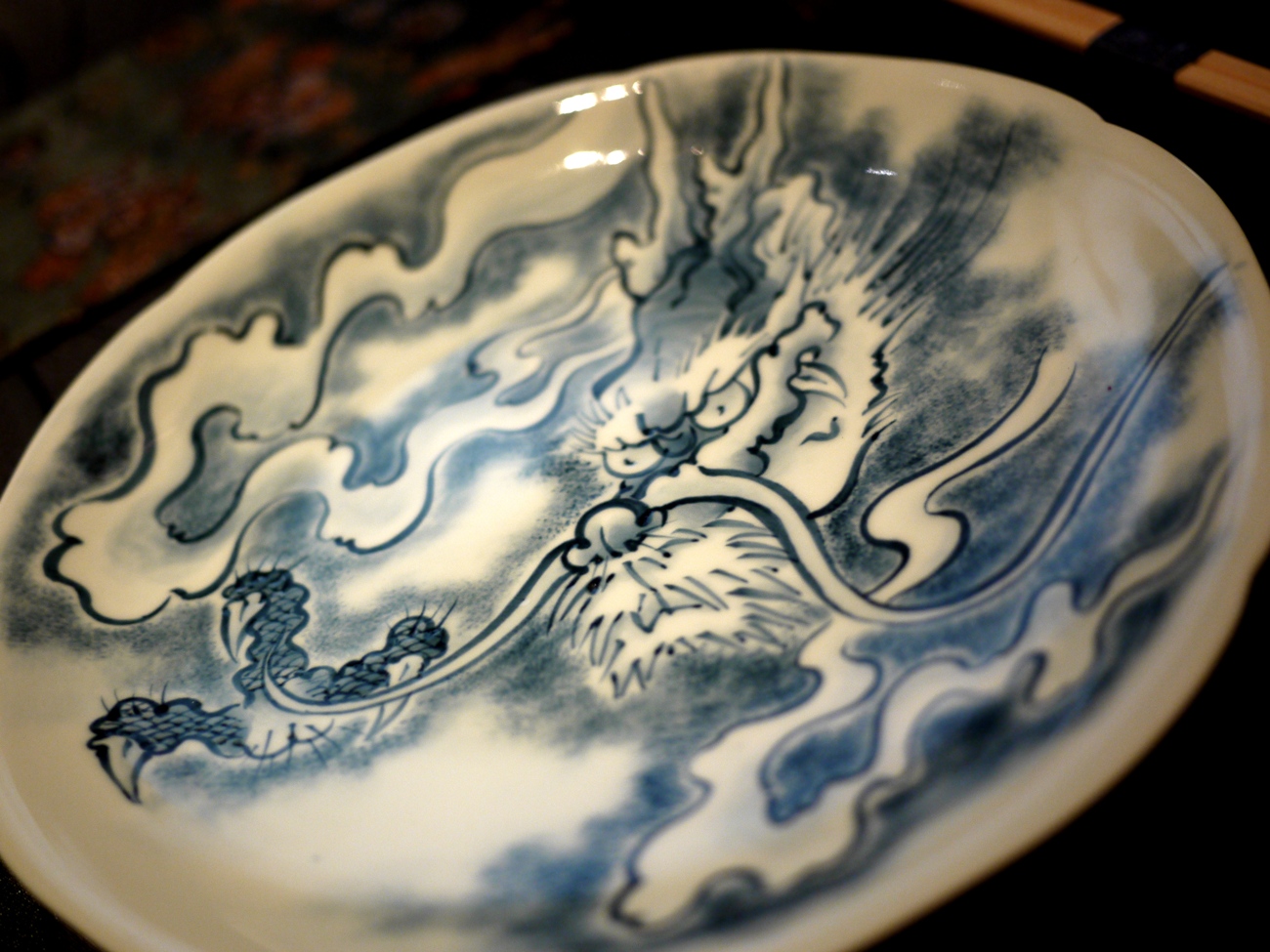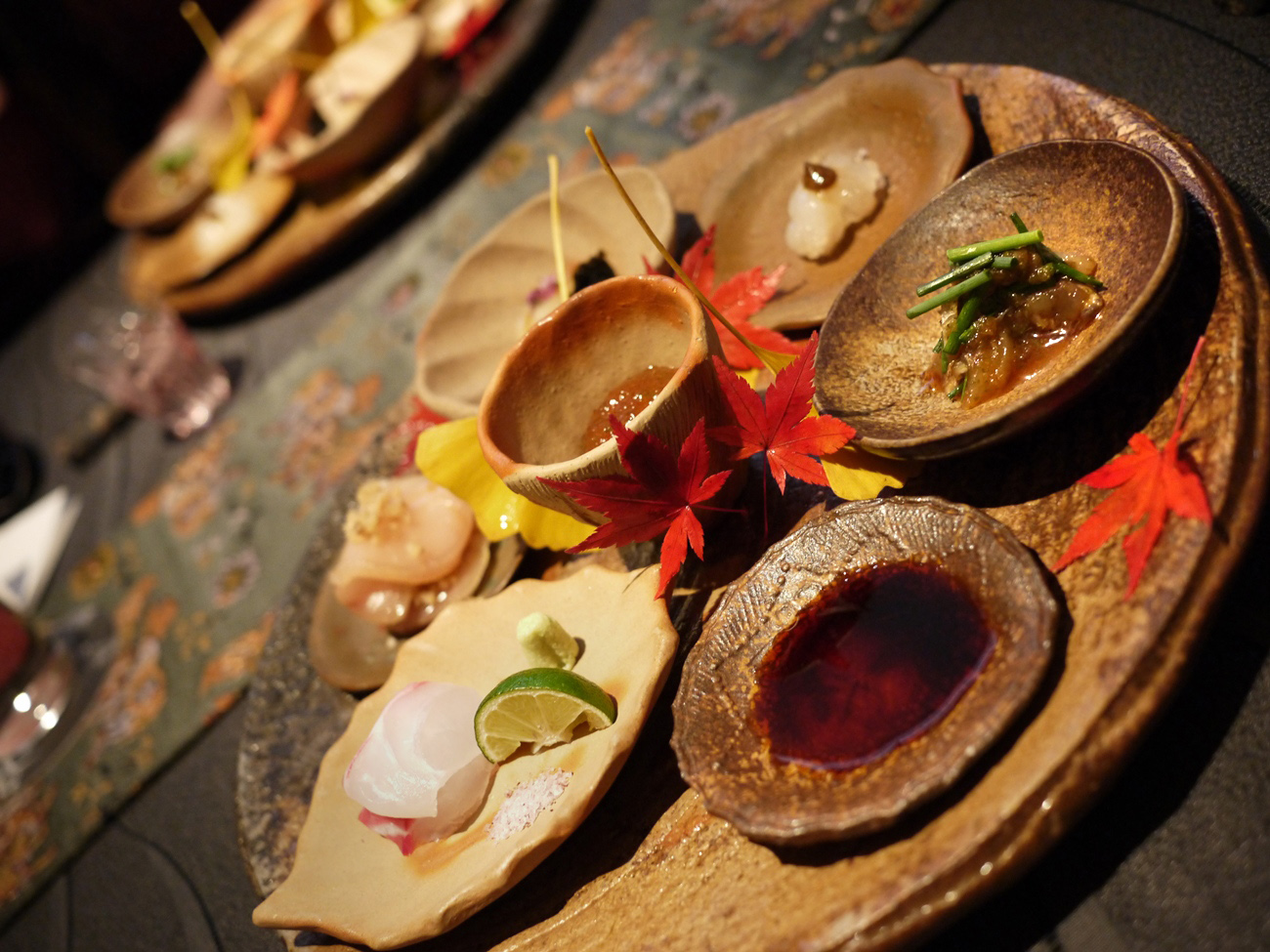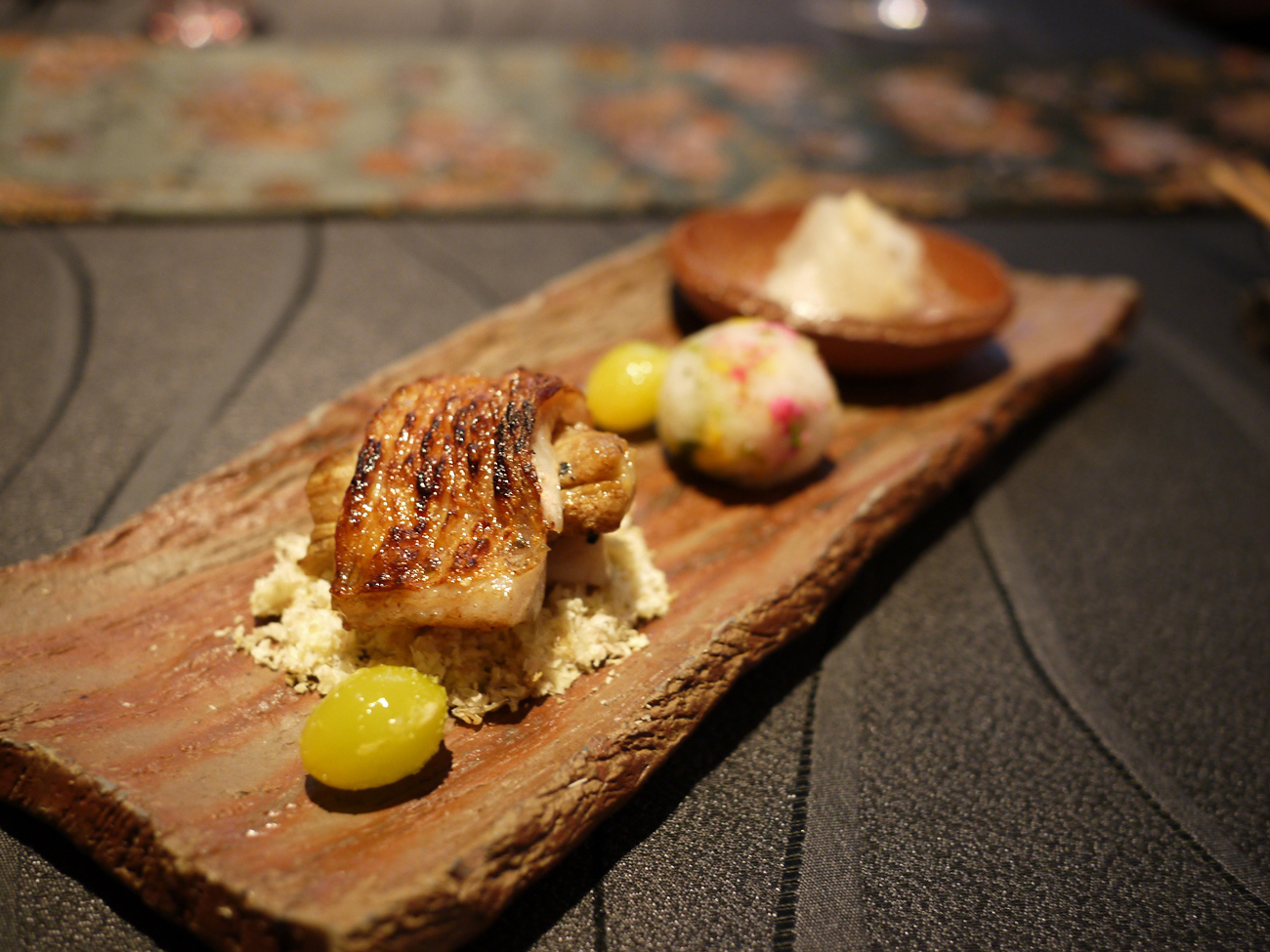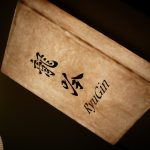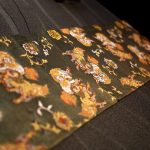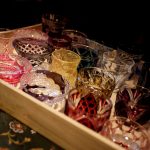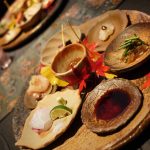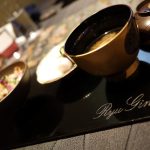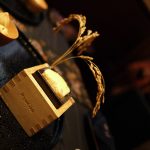CLICK ON THE MAIN PHOTO ABOVE TO VIEW CAPTIONS IN GALLERY FORMAT
Image 1: Having dined in Japan so many times, I have realised that it is not unusual to find restaurants located on the ground floor of an apartment building. This restaurant is no exception, located only a short walk away from Roppongi station.
Image 2: This is the place to experience what many described as the cutting edge of modern kaiseki. Although Chef Yamamoto's decade-old Ryugin is based in Tokyo, his fame goes way beyond the city's boundary. With his recent expansion to Hong Kong and by consistently holding a spot on the World's 50Best, his name is well known in the culinary world.
Image 4: We were there on a Monday night and the restaurant was full house! The dining room was a true reflection of Chef Yamamoto's modernised kaiseki cuisine, with a strong contrast between the stylish table settings and the traditionally decorated surrounding. As Ryugin means "singing of the dragon", I wasn't surprised to find out that Chef Yamamoto's favorite icon was the dragon, and I quickly found out that his favourite colour was black.
Image 5:
The backlit black panel with a dragon across the dining room…
Image 6:
The black silk cloth with dragon embroideries on the table…
Image 7:
The black dragon printed glass mat underneath my champagne flute…
Image 8:
And even the serviette was black!
Image 9: Shortly after we made ourselves comfortable, the English speaking manager removed the welcome plate (yes, a dragon again) and replaced it with a small red envelope. It was a copy of the tasting menu for the night and each course on the menu had an indication of Hot, Cold, or both!
Image 10: While we were concentrating on the menu, the whole restaurant started shaking and I had to hold on to my champagne glass to prevent it from tipping over! Yes, it was an earthquake, lasted about 10 seconds, but the service was paused for another 5 minutes before the manager came out to inform us that it was a M4 earthquake and it’s safe now!
Image 11: I quickly focused back to the meal with a thought in mind - if it's time for me to go, it'd better be after this meal! So, a Variation of Autumn Vegetables for a taste of the season to begin the meal. A stack of 13 types of veggies and mushrooms dressed in a creamy pine nut sauce, offering a nice sweetness to the earthy wild mushrooms. Furthermore, it had an excellent combination of textures, in particular from the enoki and morel. What a successful warm start!
Image 12: Each course was served on a different tray providing a fresh backdrop for each dish. Amazing! Another warm course comprised of burdock and shitake soup that was a bit bland, probably for the reason that the chef didn't want to distract our palate from what was on the right.
Image 13: A generous amount of uni (sea urchin) from Hokkaido wrapped in shiso and nori seaweed before rolling on rice paper and deep fried. The crunchy surface followed by a burst of silky uni along with an elegant shiso fragrance carrying through; the warm temperature amplified the seductive sweetness and creaminess of the rich uni inside my mouth. Wow, perhaps I was ready to die that moment!
Image 14: We ordered a bottle of sake for the rest of the meal, so once we finished our champagne, a tray of colourful sake glasses were brought out for us to select.
Image 15: Monkfish liver, again from Hokkaido, blanketed by a mixture of chopped scallop, Japanese green onion, and white miso sauce. OMG, this was "fish foie gras"! The sweetness from the white miso did a great job in prolonging the heavenly richness of the foie, I meant the fish liver! This must be as good as food could possibly get and no wonder this was his seasonal signature dish in Autumn since opening. Exceptional opening courses so far!
Image 16: For the soup course, we had the Matsuba crab from San'in.
Image 17: San'in Matsuba Crab is considered a winter delicacy in Japan that each crab gets tagged for authenticity purpose. The tag reminded me of the hairy crab from Lake YangCheng.
Image 18: The crab leg was soft and moist with a fresh sweetness. Chef Yamamoto certainly knew how to handle delicate ingredients in a traditional way as well.
Image 19: Back to cold dish, centred around a small cup of salmon roe covered in soy jelly with vegetables at the bottom was an assortment of sashimi. Elaborate plating with different condiments to pair with each fish!
Image 20: Sea bream with lime, salt, and wasabi. This fish had a good texture but I found it tasted too bland. That's why sea bream has never been my favourite choice for sashimi.
Image 21: Lightly smoked Spanish mackerel with daikon. This one was much better with an attractive smokiness infused into the fish.
Image 22:
Squid with gingered soy sauce and kombu seaweed. The squid had an incredibly creamy texture!
Image 23: Spiny lobster topped by a blob of nori seaweed sauce. Dipping in light soy sauce was recommended.
Image 24: And the last item on this extravagant sashimi plate was the back side of bream with skin, resting on a delightful sweet and sour ponzu sauce.
This set of sashimi truly showcased the beauty of traditional Japanese cuisine. I was impressed by the wide range of elegant flavours created from just slices of raw fish with a small touch of condiments.
Image 25: More seasonal fish, "Autumn colours in a plate". We had a lot of kinki (a type of rockfish) sashimi during our 2 weeks in Japan as it was one of the fish in season, but the version here was no doubt the best!
Image 26: It had an appealing aroma with a crunchy skin from grilling over charcoal. Moreover, Chef Yamamoto grilled the fish together with a piece of eggplant allowing it to soak up all the fat instead of letting it drip away! The eggplant was then served underneath the fish on top of a small pile of grated chestnut providing a fluffy and sweet finish. What a fabulous course!
Image 27: It had a radish ball with chrysanthemum in the middle followed by strands of pear with ginger as palate cleanser before the next dish.
Image 28:
As expected in Kaiseki, a simmered course.
Image 29: Here, a rather simple tofu ball with cod fish roe and mizuna served in a bowl. I found slightly difficult to settle back down to this subtle traditional dish after quite a few exciting courses from the first half of the menu.
Image 30: Really glad to see a meat course before the rice, especially after so many fish courses. The chef always uses Wagyu beef from his home town in Kagawa prefecture. Although fillet is not my favourite cut, particularly in this case because I always want some fat when I eat Wagyu, it had good flavours and was remarkably tender.
Image 31: As with any kaiseki, the main course consisted of rice, pickle and soup. Many miso soups I had over my two weeks in Japan were too intense, but this one was so light that I didn't need a sip of water afterwards.
Image 32: A bowl of cabbage and sea bream on rice. Instead of refilling my second bowl with the same…
Image 33: ... they offered a red bean and bream on rice along with a cup of sencha to warm up my palate before the sweet course.
Image 34: Similar to Ryugin's famous Strawberry -196°C+96°C, this was the tangerine version. It required a tremendous amount of work to create this frozen tangerine candy. Surely not something that I could replicate at home! There were four components: the tangerine leaf involved the use of a dehydrator; the shell made from transforming sous-vide tangerine into a soft candy before applying the blow-sugar technique...
Image 35:
… the tangerine powder inside required the use of liquid nitrogen (-196°C) and the simplest part was probably the hot tangerine coulis (+96°C) poured on top for an extreme temperature contrast.
Image 36: It was beautiful; it was fun on the palate; it had a contrast in texture and in temperature; and it had a nice balance of the flavour. Not sure if it was worth all the effort but it was a clear example of how Chef Yamamoto strives for perfection.
Image 37: And our final dessert, again, a contrast of hot and cold, and again, wonderfully presented and even served with a long caviar spoon.
Image 38: French cooking using Japanese ingredients is probably the best combination and this was a great example. Oyaki is pan-fried dumpling made from buckwheat dough stuffed with red beans, and using the same elements with sake, Chef Yamamoto made a soufflé of Oyaki and Ginjo Sake!
Image 39: It came with an egg soft ice cream on the side. The ice cream was excellent by itself and was even better by melting it on the warm airy soufflé. I was very satisfied to end my Japanese trip with this high quality dessert.
Image 40:
As expected, the meal finished with a proper matcha.
Image 41: Kaiseki is always a pleasure for both the eyes and the palate. Chef Yamamoto definitely scored well in both aspects, but I did expect more modern twists to his cuisine. Though I was thrilled by the first few courses, I felt the innovative flare was gone in the middle section of the meal by serving typical traditional courses. Some say he has been moving back to more traditional cooking after many criticised his food not being authentic enough...
Image 42: ... I can't comment since I haven't experienced his cuisine in the past. In any case, I certainly would come back to experience the "singing of the dragon" in another season. Customary to the Japanese tradition, Chef Yamamoto accompanied us out of the restaurant, only turning his back after we were out of sight. And we had to run as well in order to catch the last train to Narita airport!








